 LTP Financial Tools-
interest rates swap and reserves strategy
17 November 2020
LTP Financial Tools-
interest rates swap and reserves strategy
17 November 2020











 Baseline without financial tools
Increase of $21.6m (10.9%) in 2025/26
Increase of $24.7m (17.6%) on 20/21
Baseline without financial tools
Increase of $21.6m (10.9%) in 2025/26
Increase of $24.7m (17.6%) on 20/21
1. Waterloo Railway Stn roof renewal $5.6m
Reduction of $12.9m (-5.8%) in 2029/30
1. Mvt in reserves $11m
2. Rail station upgrades $12.6m
1.
Rail station upgrades completion in 27/28, -
2. PT revenue gap $8m rail and bus
3. Wairarapa carriage replacement $1.8m
$14.7m
4. Rail contract – Wairarapa Service Improvement $1.2m
20%
2.
Rail fare revenue -$0.9m
3.
Rail timetable changes +$1.7m
4.
Additional fleet capacity +$0.5m
Reduction of $2.2m (6.8%) in 2030/31
15%
1.
Rail fare revenue -$0.9m
2.
Investment Mngt swaps expenditure -$1.3m
10%
ase
erc
In
5%
s %
ate
R
0%
2021/22
2022/23
2023/24
2024/25
2025/26
2026/27
2027/28
2028/29
2029/30
2030/31
-5%
Increase of $12.5m (7.6%) in 22/23
1. Improvements to Regional Stations $1.3m
Increase of $12.7m (7.2%) in 23/24
Reduction of $2.8m (-1.3%) in 2026/27
2. Matangi Heavy Maint/Overhauls $0.7m
1. Rail Contract - RS1 Implementation Fee $1m
1.
Waterloo Railway Stn roof renewal project completion in
3. Snapper Profes -
si 10%
onal services $0.5m
2. Capex GWRC Ticketing Solution $2.5m
25/26, not rated in 26/27, -$5.6m
4. Committed $1.4m
3. Wairarapa - Carriage Replacement $1.3m
2.
Improvements to regional stations project completion in
5. EV Programme Capex GWRC Ticketing Solution $1.4m
4. GWRC Ticketing operations $3.1m
25/26, not rated in 26/27, -$1.3m
6. Wairarapa - Carriage $0.6m
Environment & Catchment:
3.
Early locomotive termination fee -$2.4m
7. Replacement RTDIS $0.8m
5. Movement in debt servicing $1.3m
4.
Rail fare revenue -$0.8m
8. Replacement Development Rail Contract - RS1 New
6. Movement in reserves $0.4m
Offset with:
Timetable $1.3m
7. Reduced Crown funded project revenue $0.5m
1.
Wairarapa carriage replacement $4.6m
Environment & Catchment:
2.
Additional fleet capacity $0.8m
9. Movement in debt servicing $1.9m
3.
Timetable changes operation $0.8m
10. Reduced Crown funded project revenue $1.2m
4.
Wairarapa Service Contract Improvement $1.2m
Baseline
Council Low
Council High

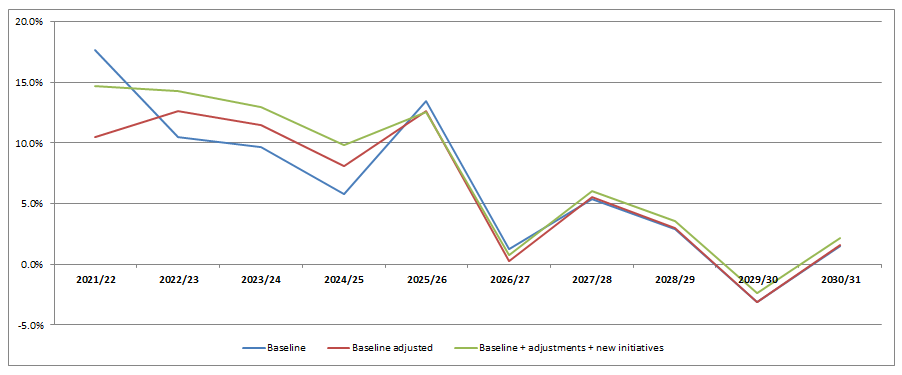 Rates % increase without use of PT Reserve
Rates % increase without use of PT Reserve
Environment – Regulatory Change Impact
2021/22
2022/23
2023/24
2024/25
2025/26
2026/27
2027/28
2028/29
2029/30
2030/31
Regulatory Initiatives:
Yr1
Yr2
Yr3
Yr4
Yr5
Yr6
Yr7
Yr8
Yr9
Yr10
Regional planning - implementing and responding to national direction
1,500,000
2,000,000
2,350,000
2,250,000
2,250,000
1,300,000
1,000,000
1,000,000
500,000
-
Fit for the Future
1,250,000
1,250,000
1,250,000
1,250,000
1,250,000
1,250,000
1,250,000
1,250,000
1,250,000 1,250,000
Wetland mapping and monitoring
-
-
-
140,000
140,000
140,000
80,000
80,000
80,000
80,000
Freshwater Science and monitoring
-
-
300,000
300,000
300,000
300,000
300,000
300,000
300,000
300,000
Facilitating local climate change adaptation processes
-
-
-
-
-
200,000
200,000
200,000
200,000
200,000
Completing whaitua development in a more integrated way
-
250,000
250,000
250,000
250,000
250,000
-
-
-
-
Total
2,750,000
3,500,000
4,150,000
4,190,000
4,190,000
3,440,000
2,830,000
2,830,000
2,330,000 1,830,000
Indicative Rates Increase
1.9%
2.5%
2.9%
2.9%
2.9%
2.4%
2.0%
2.0%
1.6%
1.3%
 Rates revenue and % increase: PT Reserve modelling
Rates revenue and % increase: PT Reserve modelling

 PT Reserve utilisation option: 20% Y1, 20% Y2, 15% Y3
PT Reserve utilisation option: 20% Y1, 20% Y2, 15% Y3
This option keeps the rates increase % below 15% throughout the LTP





 Rates % increase with adjustments and initiatives
Adjustments included:
16%
Rates % increase with adjustments and initiatives
Adjustments included:
16%
Rates % increase below 15% over LTP
Includes:
1. PT Reserve: 20% Y1, 20% Y2, 15% Y3 with
1. Baseline
reduction in interest revenue earned
14%
2. Adjustments
2. Removal of Nga Petone Cycleway
3. New initiatives
3. Environment additional revenue
12%
4. RiverLink loan life extension of 5 years
5. Debt funding PT revenue gap: Y1: $8m,
10%
Y2: $6m and Y3: $4m
6. PT KiwiRail maintenance programme debt
8%
funded
7. PT adjustments to FAR 51% to 90% in baseline
6%
and initiatives
4%
2%
0%
2021/22
2022/23
2023/24
2024/25
2025/26
2026/27
2027/28
2028/29
2029/30
2030/31
-2%
-4%
Baseline + adjustments + new initiatives

 Managing Interest rate risk via Hedging
Managing Interest rate risk via Hedging
What is Hedging ?
• Hedging is designed to provide certainty
• It’s a risk mitigation strategy against fluctuating interest rates,
commodities, or foreign exchange movements
• Our discussion will focus on
interest rate hedging
• What is the risk we are trying to avoid?
• There is a cost to have certainty via hedging, but there could be a
even bigger one with taking a risk – i.e. uncertainty
• Finance Strategy – LTP – Financial Prudence (not taking undue risks)
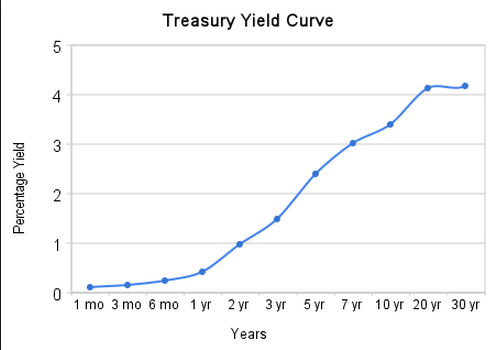 Fixed or Floating rate interest cost ?
Fixed or Floating rate interest cost ?
• There are two types of interest bearing debt
•
Fixed rate - the interest rate remains constant over life of the debt
•
Floating rate - the interest rate on the debt is re-priced generally every 90
days
•
Floating rate is generally cheaper
than
Fixed rate
Fixed Rates
• but interest rates change over
time
Floating Rate
3 months
• 90 days is 0.25%, 10 years is 3.5%
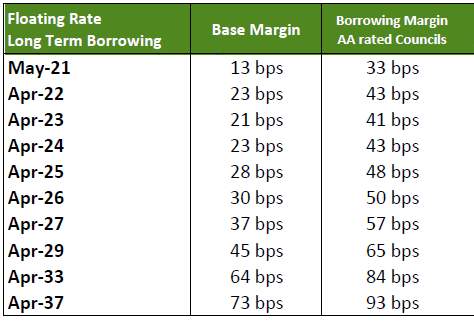 How Council manages its Debt
How Council manages its Debt
• All Council debt is borrowed at a floating interest rate i.e. re-priced every 90
days
• Funds are borrowed for various terms, overnight, 90 days to up to 17 years
• Interest rates risk on Councils debt is managed separately
Note
LGFA
• Our cost to borrow to April 2025 is the
90 day rate plus a fixed margin of 0.48%
• 90 day rate is 0.28% now
• i.e 0.76% for the next 90 days
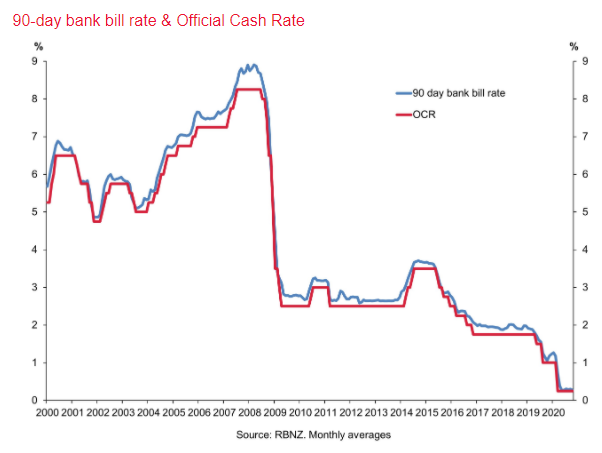
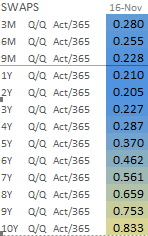 Graph of 90 day Floating rate over time Current Fixed rate SWAPS 16 Nov
Cost to fix via swap for 5 years to
Graph of 90 day Floating rate over time Current Fixed rate SWAPS 16 Nov
Cost to fix via swap for 5 years to
2025 is 0.37%
Showing our Borrowing portfolio spread
30-Jun-20
Greater Wellington Regional Council
Funding Maturity Chart
0 - 3 years
3 - 6 years
6 years plus
15%-60%
15%-60%
10%-60%
39%
34%
27%
150.0
125.0
100.0
75.0
m
D
Z
N
50.0
25.0
0.0
2023
2026
2033
-25.0
1-
2
3
4
5
6
7
8
9
0
1
2
3
4
5
-
-
-
-
-
-
-
-
1
1
1
1
1
1
0
1
2
3
4
5
6
7
8
-
-
-
-
-
-
9
0
1
2
3
4
1
1
1
1
1
Maturity Date Bucket
Drawn Loans
CP
Available
Linked Deposits
How is the councils interest rate risk managed ?
• The floating interest rate can be switched into fixed rate with an interest rate swap
• An interest rate swap can be for a short time i.e. 6 months or a long time i.e. 17 years +
• We have a portfolio of floating rate interest cost - some overlaid with fixed rate swaps
•
Interest rate swaps are flexible they can be cancelled, they can be extended or shortened
.. Banks are happy to do this …. More on this later
• Operation of Swaps governed by our Treasury Risk Management Policy
Example of a how a SWAP works
• WRC borrow funds at a floating interest rate (each 90 days the rate is re-
priced) and rates determined by the market were:
4.25%, 3.75%, 3.50%, 3.00% on Drawdown, March, June, September,
Borrowed $10 million from LGFA on floating rate note for 1 year
• WRC enters into a swap to ensure a
fixed interest rate for 1 year at 3.50%
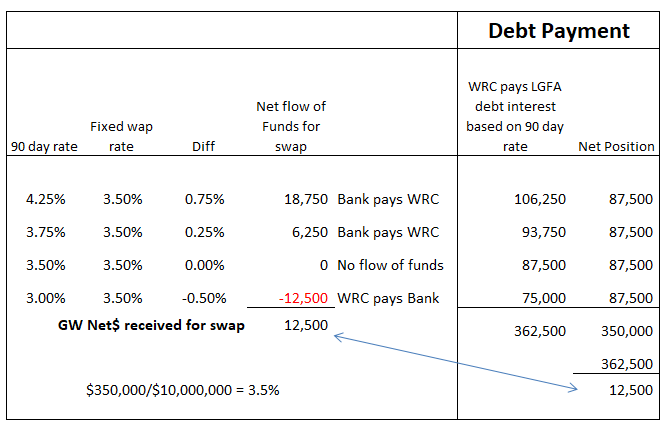 Example of a SWAP
Example of a SWAP
=C

 Example of a SWAP
Swap fixed rate v Floating rate showing payoff
Example of a SWAP
Swap fixed rate v Floating rate showing payoff
4.50%
4.00%
$18,750 &
$6,250 bank
pays us
Floating rate
Fixed rate
3.50%
$12,500 pay to bank
3.00%
Mar
Jun
Sep
Dec
Treasury Risk Management Policy
• Policy sets out the parameters under which we manage our interest rate
risk
• Reviewed every 3 years, any changes are advocated/supported by our
Treasury Advisors –PwC and approved by ELT, FRAC, Council
• Policy provides latitude to take some view on interest rates - reviewed
at least quarterly by PwC
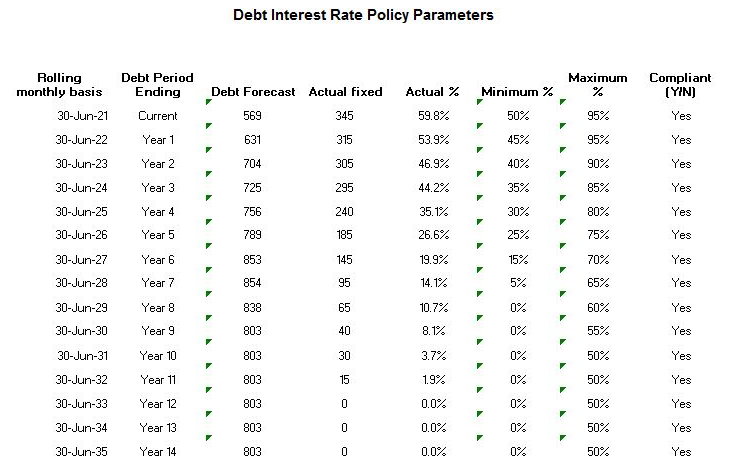 Interest rate Hedging Policy parameters – Fixed rate
Interest rate Hedging Policy parameters – Fixed rate
 Hedging/Fixed interest rate graphically
Hedging/Fixed interest rate graphically
SWAP valuations
• Swaps valued regularly, reported quarterly via our management reporting to Council
• Is an Accounting requirement, impact are:
•
Balance sheet valuation reflect the current position if swaps cancelled today
•
Profit and Loss account amounts represent the
changes between years
• Valuations vary as interest rate move up and down and as the swaps are used-
up/extinguished
Interest rate SWAPS are flexible
• Currently we have pressure with our LTP .. Can we use swaps to help us out ?
• Yes, anything is possible
• Its like your home mortgage you can easily change the rate … but there is often a cost
• An
opportunity cost and a
costs of the bank to pay
• We can reduce interest costs in the next few years by extending out our swaps
• Simplistically we pay fixed rate 5% for 2 years we can extend and pay 2.5% for 4 years
• But after 2 years if we paid 5% we could pay 0.25% for the next two years instead
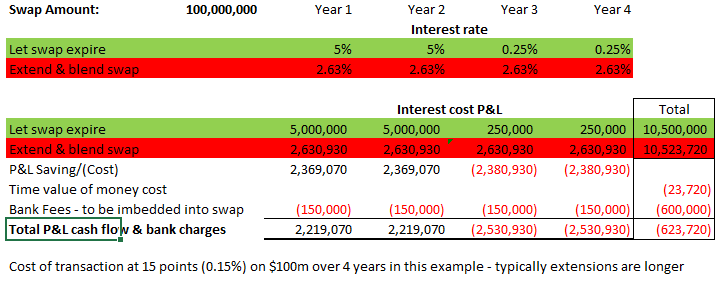 Interest rate swaps – Swap extensions – Simple scenario
Interest rate swaps – Swap extensions – Simple scenario
• $100m of Debt and a swap on this to pay 5% for 2 years and want to extend 2 years
• Current 90 day floating rate is 0.25% and same for the next 4 years

 What an extension looks like
What an extension looks like
Proposed extension
Completed extension
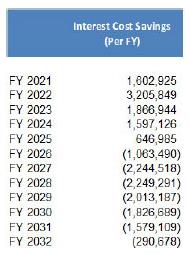 Extension scenario 1 – Target $2m per year over next 3 years
Extension scenario 1 – Target $2m per year over next 3 years
• Asked PwC to provide scenario of
targeting saving of $2m over first 3
years of LTP.
• Includes bank charges amounting to
$2,200,000
• Amends $160 million of swaps
• Average extension 9 years
• Terminal interest rates 2.6%
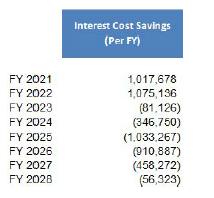 Extension scenario 2 – Optimise Blend & Extend – rate reduction
Extension scenario 2 – Optimise Blend & Extend – rate reduction
• Asked PwC to provide scenario to
optimise best value saving on
extending high interest rate
swaps
• Includes bank charges of
$650,000
• Amends $60 million of swaps
• Average extension 7 years
• Terminal interest rates 2.5%
Advantages of blend and extending swaps
• Can provide immediate interest cost savings
• Lowers average interest rate in early years
• Regret factor on execution is presently low, rates can go lower but limited
Disadvantages of blend and extending swaps
• While initial saving, costs are increased in later years
• There is a cost to complete transaction – can be expensive
• There is no competitive pricing, have to take banks charges, or abandon
• Changes can range from 0.05% per annum to 0.20% depends on bank and
market conditions
• Can create problems in latter years as cost reverse
Recommendation
• There is no right or wrong answer
• Economically it does not stack up because of the bank costs, these are spread.. nevertheless
are to be paid
• Would not do this in the ordinary course of business unless there is an imperative
• What are our advisers recommending .. As above.








































